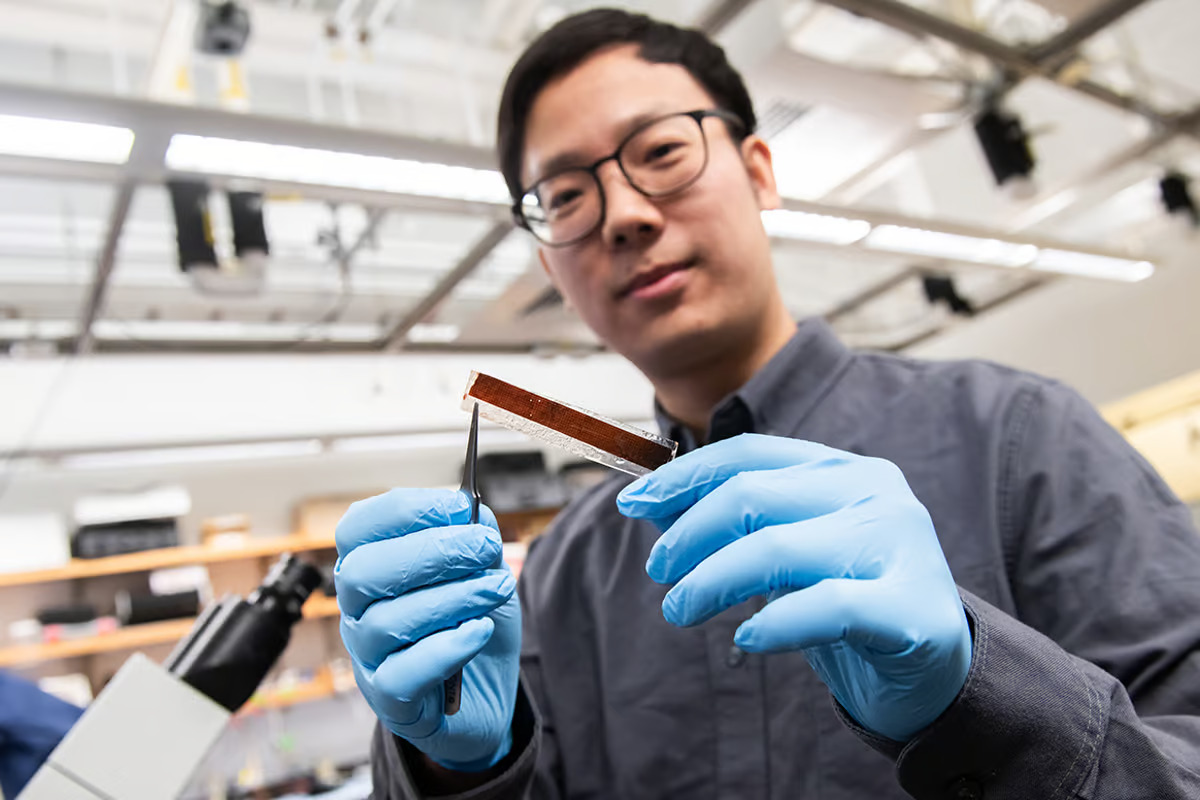 Pengju Li, a researcher on the study, holds a prototype pacemaker that’s only 1 micrometer thick, and operated by light pulses. Jean Lachat –
Pengju Li, a researcher on the study, holds a prototype pacemaker that’s only 1 micrometer thick, and operated by light pulses. Jean Lachat –
The heart pumps thanks to a series of very carefully timed electrical signals, but if those signals fall out of time, they can lead to all sorts of issues, such as strokes, heart attacks or even a fatal failure of the organ. Pacemakers monitor and correct these abnormal rhythms, but they require invasive surgeries and bring their own risks.
The new device is much less invasive – it’s a thin film just one micrometer thick, which is about 100 times thinner than a human hair, or a recent similar device made of graphene which was also 100 micrometers thick. It tips the scales at just one 50th of a gram, making it 250 times lighter than a regular pacemaker. And rather than needing a battery, it’s powered by light.
Obviously light doesn’t usually reach the heart (unless something is terribly wrong), so an extremely narrow optic fiber is inserted alongside it. The fiber lights up in a specific pattern, which triggers the thin film to produce an electric current. The film is made of two layers of P-type silicon – the top layer is dotted with nano-scale holes that confine the electricity, allowing the device to stimulate very specific parts of the heart on demand, producing the desired rhythm.
The team tested the device in human heart tissue grown in the lab, then in isolated rat hearts, then moving up to living mice and rats, and finally to living pigs. In all cases, the technique worked to stimulate the heart’s rhythm as needed, requiring only endoscopic surgery rather than opening up the chest cavity.
In its current form, this thin pacemaker is designed to be temporary, dissolving into a nontoxic compound called silicic acid, which negates the need for another round of surgery to remove it. But the team says that future versions could be adapted to last different time frames.
The researchers also say that the device could be used to stimulate nerves on demand, in specific patterns. This could be used to treat the symptoms of conditions like Parkinson’s or chronic pain.
The research was published in the journal Nature. Source: University of Chicago
–























